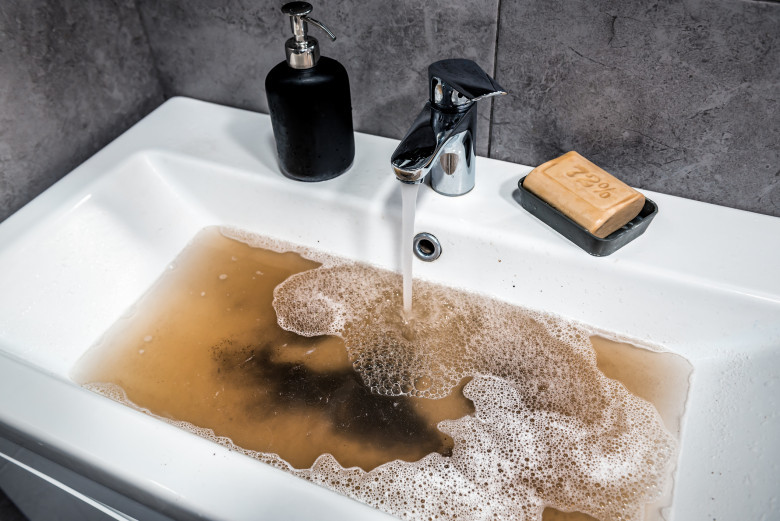views
Looking up "help my drain is clogged" or "what's blocking my bathroom sink again?" Good. Because you're not alone. Bathroom drain clogs don't just show up—they're built, piece by piece, by the stuff people flush, rinse, or wash down, thinking it'll be fine. Spoiler: it won't.
Every backed-up sink or flooded shower starts with something that didn't belong there. From makeup wipes to mystery sludge, the list of drain-killers is long—and getting longer. If you're dealing with recurring blockages, it's not bad luck. It's habits. Let's break down the biggest offenders behind common drain clogs.
What Counts as a Bathroom Drain Clog—and Why It’s More Than Just “Slow Drainage”
A bathroom drain clog isn’t just water taking its sweet time. It’s a backup waiting to blow. Behind every sluggish drain or bubbling toilet is a pile-up of stuff that was never supposed to enter your plumbing in the first place.
Left alone, it doesn’t just stay slow—it escalates into pipe stress, mold buildup, foul smells, water damage, and, in some cases, a full-blown backup that wrecks your flooring, subfloor, and mood all in one shot.
And most of it? It starts with everyday items that get flushed, rinsed, or tossed into drains by habit—not logic. Here are 6 things you should never flush if you want to avoid a bathroom drain clog and the ugly repairs that follow.
1. Flushable Wipes That Aren't Actually Flushable
The package says flushable. The pipe says absolutely not.
These so-called wipes don't dissolve. They bind with grease, cling to rough pipe interiors, and form dense clumps that choke your drain line. It starts with slow flow. Then comes a full blockage. Then you're asking Siri for a "local plumber near me for bathroom drain clogs."
Trash the wipe. Keep the water moving.
2. Hair—And It's Worse Than You Think
Hair is the public enemy number one when it comes to bathroom drain clogs. You think a few strands are harmless—until they tangle with soap residue, create a net, and catch everything else that follows.
If your tub sounds like it's gurgling after use, odds are the hair's already wrapped tight inside your P-trap. A drain snake works if you're lucky. A pro works when you're not!
3. Greasy Soap Residue
Not all soaps are created equal. Those high-fat, "moisturizing" bars? They leave behind a waxy residue that sticks to pipe walls like glue. Over time, that film builds, narrows pipe openings, and grabs onto everything else that flows by.
You won't see it forming. But you'll feel it when your drain starts holding water longer than usual. That's not poor water pressure—that's soap turning your plumbing into a time bomb.
4. Cotton Swabs, Pads, and Dental Floss
If it's not human waste or toilet paper, it's not flushable. Cotton swabs and pads might feel innocent, but they absorb water, swell up, and wedge themselves into bends in the drain line. Dental floss? It becomes a net for debris.
Together, they create some of the nastiest clogs professionals pull out of bathroom pipes. It's always a mess—and it's always preventable.
5. Hard Water Buildup
Hard water minerals like calcium and magnesium don't flush. They stick! They coat the inside of pipes and create scale that narrows the flow. If your fixtures have white crust around them, your pipes have it worse.
Over time, this crust traps everything else. Suddenly, you're facing a line that's half its original diameter—just from invisible buildup. A water softener can help, but without it, annual drain inspections are your only defense.
6. Excess Toilet Paper—Yes, Really
Too much of a good thing becomes a plumbing nightmare. Even septic-safe toilet paper can overwhelm a system when it's used in excess. Stack that with low-flow fixtures or minor pipe damage, and you're one flush away from overflow.
If the bowl rises before it drops, stop flushing. It's not clearing. And it's about to back up!
Why These Clogs Keep Happening
Bathroom drain clogs creep up quietly, stacking layer by layer until water has nowhere to go but back. The worst part? Most of the damage is avoidable—if the right materials don't go down the drain in the first place.
And when prevention fails? A clogged drain fix needs to be more than a plunger and a prayer. Trained plumbers use video scopes, water pressure tests, and extraction tools that dig out deep blockages without tearing up your floors. They don't guess—they verify.
So if your sink's gurgling, your shower's holding water, or the toilet's making that weird gulping sound—it's time. Call someone who knows what lives inside those pipes before it floods everything outside them.
When the Drain Backs Up, This Is the Crew That Shows Up Ready
Nothing flushed ever truly disappears. It stacks up—slow, silent, and strategic—until your plumbing throws in the towel. To skip the blowback, smart homeowners rethink what goes near a bathroom drain. Cause once those common drain clogs form, you’re either grabbing a mop or calling in a pro.
And that’s where crews like Doyle Plumbing, Inc. step up. They don’t just clear the mess. They clear it fast, without ripping up your bathroom or playing guessing games. Their licensed techs handle bathroom drain clogs with real diagnostics, right tools, and zero shortcuts.
When damage strikes or backup brews, you need a local plumber who handles it all, from the cause to the cleanup. Doyle Plumbing, Inc. brings peace of mind without the mess and tension. That’s why smart homeowners in this zip code keep them on speed dial.




Comments
0 comment